#light decay
Explore tagged Tumblr posts
Text
Do car headlights run out of light?
Car headlights don’t “run out of light” like batteries do, but their brightness and performance will gradually degrade over time until they no longer meet safety needs. This phenomenon is called Lumen Depreciation. The specific causes and countermeasures are as follows:
1. Causes and lifespan of lumen depreciation 1. Lumen depreciation rate of different light sources Headlight type Average lifespan Lumen depreciation threshold (brightness drops to 70% of initial value) Halogen bulb 500–1,000 hours About 500 hours (15% depreciation per year) Xenon lamp (HID) 2,000–3,000 hours About 2,000 hours (5% depreciation per year) LED headlight 15,000–30,000 hours About 15,000 hours (1–3% depreciation per year)
Halogen bulb: Filament evaporation causes glass to blacken, and brightness drops by 10–20% per year.
Xenon lamp: electrode loss and gas impurities lead to reduced light efficiency.
LED: chip aging, poor heat dissipation or driver circuit failure cause light decay.
2. Intuitive manifestation of light decay
Shortened irradiation distance: LED headlights originally designed to illuminate 100 meters may only reach 60-70 meters after 5 years.
Color temperature shift: HID lamps may change from 5,000K cold white to 4,200K warm yellow, reducing road contrast.
Beam scattering: lampshade oxidation or internal reflective bowl coating peeling, resulting in scattered light (brightness perception decreases by 30-50%).
2. Common factors that accelerate light decay
High temperature environment:
Halogen bulbs have an operating temperature of 250℃, and long-term high temperature accelerates filament evaporation.
Poor LED heat dissipation (such as aftermarket modified parts) will cause the chip temperature to exceed 120℃ and shorten the life by 50%.
Voltage fluctuation:
Unstable voltage in the vehicle circuit (such as generator failure) will make the arc of the HID bulb unstable and accelerate electrode loss.
Physical damage:
Scratches and fogging of the lampshade (transmittance drops from 90% to 60%).
Failure of the seal causes water to enter the interior and corrosion of the reflector bowl (loss of brightness by 40%).
III. How to determine whether the headlights need to be replaced
Professional test:
Use a Lux Meter to measure the headlight intensity. If it is less than 1,000 lumens (low beam), it needs to be replaced (GB 4599 requirements).
At night, check whether the light spot is uniform and whether there is a dark area at a distance of 10 meters.
Self-test method:
Wall projection method: Aim the headlight at the wall in a dark place and observe whether the light pattern is clear (if the light and dark cutoff line is blurred, maintenance is required).
Comparison test: Compare the brightness difference with the same model headlights of new cars.
IV. Solution 1. Regular maintenance
Clean the lampshade: Polish with UV sealant (such as 3M 39008) every 6 months to restore light transmittance.
Check the circuit: Make sure the voltage is stable (halogen lamp: 12.8–14.4V; LED: 9–16V).
2. Upgrade options
LED replaces halogen: Choose a model with optimized thermal management (such as Philips X-tremeUltinon, with a life of 25,000 hours).
Replace the assembly: The original headlight assembly (such as Toyota original LED) can restore 95% of the original performance.
3. Economical repair
Reflector bowl refurbishment: Electroplating repair (cost about ¥200–500/piece), suitable for old cars.
Replacement of aftermarket headlights (such as TYC brand) costs 30% of the original cost.
V. Regulations and safety tips
Annual inspection requirements: China GB 7258 stipulates that the low beam brightness must be ≥ 800 lumens, otherwise it is considered unqualified.
Safety risks: Headlights with severe light decay will increase the night accident rate by 40% (NHTSA data).
Summary: The headlights will not suddenly "lose light", but the performance will gradually decline with time and use. It is recommended to check the light decay every 2 years and replace or repair it in time when the brightness is below the safety threshold. Give priority to original or well-reputed brand accessories to avoid secondary light decay caused by cheap modified parts.

#led lights#car lights#led car light#youtube#led auto light#led headlights#led light#led headlight bulbs#ledlighting#young artist#car#cars#SUV#halogen#LED#LED light bulbs#car light#truck#light decay#brightness#headlight#headlight bulb#headlamps#headlamp#xenon headlights#lamp#lights#lighting#Halogen bulb#HID lamps
0 notes
Text
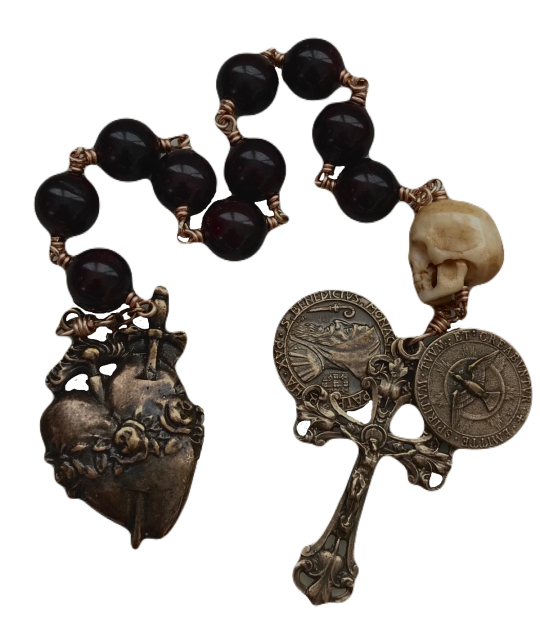
#religion#religious imagery#catholic#christian faith#christianity#rosary#transparent#png#light academia#aesthetic#classic academia#goth#gothcore#midwest#regional gothic#rural#dark academia#ruralcore#rural decay#rural america#rural life#small town usa
3K notes
·
View notes
Text
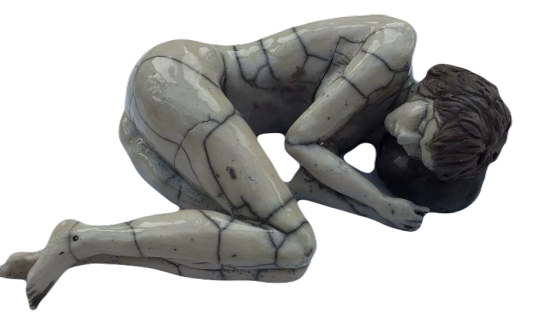
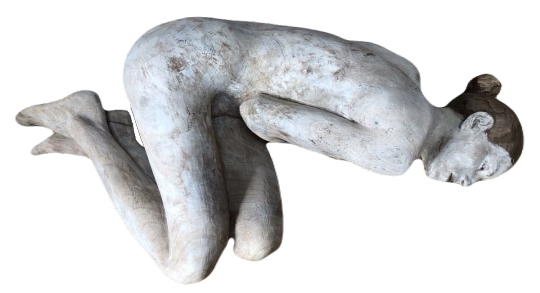
turned photos I found on Pinterest into png transparent ones
#png#transparent#sculpture#sculptures#random pngs#curators on tumblr#art#artblr#artist#artists#light academia#dark academia#goth#regional gothic#midwest#rural#ruralcore#rural america#rural decay#gothcore
152 notes
·
View notes
Text

#suburban gothic#empty places#parking lot#abandoned#desolate#old parking lot#liminal spaces#street lights#light post#suburban decay#old street#suburbcore#park#sidewalk grass#nostalgia#liminal
152 notes
·
View notes
Text






📍The ruins of St. Mary's Church in the Wye Valley, Wales.
#dark academia#light academia#classical#academia aesthetic#escapism#academia#books and libraries#classic literature#books#architecture#place#travel#photography#St. Mary's Church#Wye Valley#Wales#cymru#ruins#gravestones#graveyard#beautiful#decay#royal core#cottage core#aesthetic#academic#aesthetics#mood#vibe#tumblr
521 notes
·
View notes
Text


Sources: † , †
#goth#gothic#gothcore#aesthetic#horror#eerie#dark academia#light academia#dreamcore#weirdcore#rural decay#midwest#art#artblr#macabre#liminal spaces#occult
235 notes
·
View notes
Text

#bird#birds#taxidermy#specimen#goth#gothic#regional gothic#midwest#aesthetic#dark academia#light academia#classic academia#rural#rural decay#ruralcore#rural photography#rural life#science
209 notes
·
View notes
Text
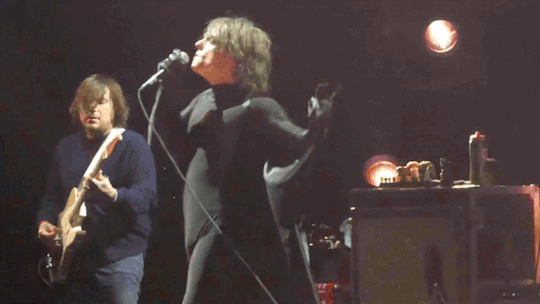

And never again, and never again They gave us two shots to the back of the head And we're all dead now
#hit the link it's a really good edit video#gerard way#bat boi#frank iero#my chemical romance#i never told you what i do for a living#decay era#or maybe it' swarm era whatever#tw: flashing lights#rubbish78gifs#my gifs#mcr
1K notes
·
View notes
Text


Abandoned Greenhouse
#nature#naturecore#reclaimed by nature#abandoned#abandonedcore#abandoned buildings#nature reclaiming#abandoned greenhouse#abandoned places#decay#greenhouse#overgrown#dark academia#light academia#ethereal#greenery#plants#forest#atmospheric#visual storytelling#digital art#art#environment art#3d environment#3d art#my art#artists on tumblr#small artist#art community
105 notes
·
View notes
Text


Tirando de archivo (2022). Gasolinera abandonada cerca de La Orbada, en la carretera nacional N-620.
#new topographics#salamanca#abandoned#decay#natural light#urbex#industrial architecture#liminal aesthetic#industrial archeology#industrial decay#gasolinera#gas station#ed ruscha
185 notes
·
View notes
Text
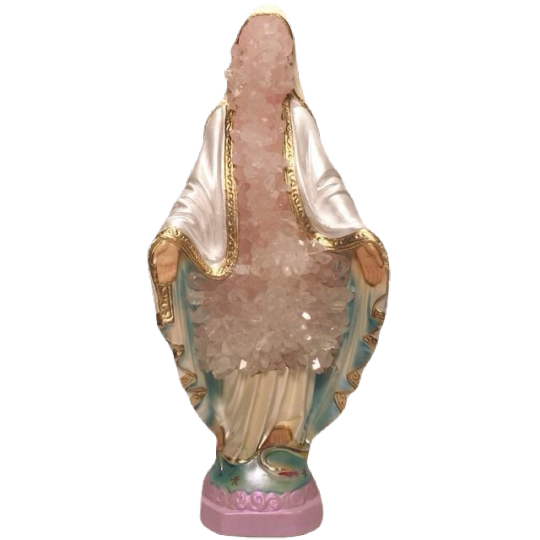
#png#transparent#midwest#regional gothic#rural#religion#christian faith#christianity#catholic#rural life#religious imagery#rural america#sculptures#sculpture#crystal#gothcore#goth#aesthetic#light academia#ruralcore#rural decay
184 notes
·
View notes
Text

Frosty and lonely..
64 notes
·
View notes
Text


foreclosed beach house
#mine#beach house collection#photography#rural aesthetic#rural gothic#southern gothic#american gothic#ruralcore#rural#abandoned house#abandonedcore#abandoned#abandoned aesthetic#moody aesthetic#spiders#bugs#grainy aesthetic#light leak#americana#lensblr#original photography#photographers on tumblr#vsco#vscocam#north carolina#urbex#rural decay#rural exploration
204 notes
·
View notes
Text


#suburban gothic#suburbcore#carpe noctem#dark street#suburban decay#late night walks#empty streets#street lights#american gothic#liminal#liminal spaces#emptycore#empty places
214 notes
·
View notes
Text
Some of the most compelling narrative choices in the series gain new depth when seen through the lens of Snow White. Not only are the fairytale’s motifs and themes explored, but its traditional roles—especially those tied to gender, beauty, purity, and familial dynamics—are reshaped and subverted. George goes so far as to complicate the fairytale’s naming logic. Both Snow White and Jon Snow are named in ways that reflect how society perceives them, based on conditions of birth they could not control. In reworking such a familiar symbol, the narrative seems to pose a deeper question: what does it mean for birth to define you?
The opening of the Brothers Grimm’s Little Snow White features a queen seated at a window, sewing as snow falls. She pricks her finger on her needle, and then three drops of blood fall onto the snow, prompting her to wish: ‘If only I had a child as white as snow, as red as blood, and as black as the wood in this frame.’ Soon after, Snow White is born with those exact physical traits, and the queen dies. Snow White’s life is later shaped by these traits she was born with. This introduction finds an echo in Arya’s first chapter. Though the scene is not a direct recreation, the resonance is clear. For one, two central figures of the chapter—Jon Snow and Ghost—recreate Snow White’s symbolic triad of black, white, and red. And Arya, a known Lyanna lookalike, interacts with Jon at a setting defined by its window—mirroring the queen’s position in the fairytale. The set up is too similar to brush off as coincidence. Even the needle is present through Jon and Arya’s conversation, but where the original tale links the needle to traditional gender roles, here that is a bit inverted. It is needlework/swordplay that prompts the wish, and Jon Snow who grants it, gifting Arya the sword she names Needle. This connection deepens when Arya is read as a stand-in for Lyanna—Snow White’s mother in this reimagining, and is underscored by the knowledge that Lyanna, too, would have wished to wield a sword like Needle. In this light, Jon—the ‘Snow White’—has fulfilled his mother’s wish by empowering a girl like her. This moment is deeply rooted in the fairytale’s framework, but even outside that lens, one can see how this moment rejects predetermined identity at birth. Instead, it affirms the power of choice and personal agency, even in the face of stigma.
That said, at its heart, Snow White is a tale obsessed with beauty—so I must factor this into my analysis. This should be clear, but George does not play the trope straight. Instead, he reframes the idea of who is ‘fairest’ and why that matters. Early on, Jon Snow is described as ‘dark where Robb was fair.’ This juxtaposition flips the original script, and the word fair, which traditionally connotes beauty, is stripped of that weight and is posed as a simple descriptor of Robb’s lighter coloring in comparison to Jon’s darker one. So Jon is not the fairest, and yet that is a crucial factor of Catelyn’s discontent with Jon’s presence because Jon closely resembles Ned Stark, her husband. Her rejection of Jon mirrors the Queen’s rejection of Snow White, but here the source of tension isn’t beauty—it’s resemblance that only worsens underlying fears and insecurity. These insecurities are rooted in Catelyn’s constrained role as a woman in a society that limits her agency—even within her own home. So her push to have Jon sent away (despite her husbands protests) can be read as an act of defiance against the role assigned to her at birth.
That said, Catelyn is not a reimagined evil queen—she sort of exists as a foil. This distinction is essential to understanding not only her relationship with Jon, but also how the fairytale’s landscape is reconstructed. Crucially, Jon and Catelyn barely interacted in the text. This deliberate absence severed the emotional intensity of the “stepmother”/“stepchild” dynamic and reoriented asoiaf’s moral center. Their separation reinforces the idea that their conflict is not merely personal, but symptomatic of broader structural inequality. To emphasize her role as a foil to the evil queen, consider the moment when a young girl—Sansa—will seemingly surpass Catelyn in beauty. The trope is immediately subverted. Cat was not envious of Sansa’s looks—she was proud and happy for her daughter. By invoking the Snow White framework only to immediately deconstruct it, George really highlighted how simplistic the original fairytale’s dynamic was.
This framework is further utilized through Jon’s journey to Castle Black, which shares a few similarities with Snow White’s own escape through the unnamed forest. Jon’s journey through the wolfswood sparked personal growth, just as hers did, and he ultimately found shelter (emotional shelter) with a dwarf. Tyrion very clearly fills the dwarf role and his Lannister identity furthers this connection (Lannister wealth comes from gold mining similar to the Seven Dwarfs in the tale). Interestingly, in some Snow White variants the dwarfs are replaced by bandits or robbers, which is exactly who Jon ended up surrounded by at the Night’s Watch.
In the fairytale, after Snow White fled into the unnamed forest, the Huntsman killed a young boar in her place. The Queen later ate the boars lungs and liver under the false belief that they belonged to the girl. In Disney’s version, the Queen wanted Snow White’s heart, but the Huntsman tricked her by giving her a pigs. She kept the pigs heart in a box that when latched closed resembled a sword through a heart. Disney’s version seems to have been the inspiration behind the motifs in Randyll Tarly’s threatening monologue: ‘Three men-at-arms had escorted him into a wood near Horn Hill, where his father was skinning a deer. “You are almost a man grown now, and my heir,” Lord Randyll Tarly had told his eldest son, his long knife laying bare the carcass as he spoke. “You have given me no cause to disown you, but neither will I allow you to inherit the land and title that should be Dickon’s. Heartsbane must go to a man strong enough to wield her, and you are not worthy to touch her hilt. So I have decided that you shall this day announce that you wish to take the black. You will forsake all claim to your brother’s inheritance and start north before evenfall. “If you do not, then on the morrow we shall have a hunt, and somewhere in these woods your horse will stumble, and you will be thrown from the saddle to die . . . or so I will tell your mother. … Nothing would please me more than to hunt you down like the pig you are.” His arms were red to the elbow as he laid the skinning knife aside. “So. There is your choice. The Night’s Watch”—he reached inside the deer, ripped out its heart, and held it in his fist, red and dripping—“or this.”’ House Tarly’s sigil—the striding huntsman—marks Randyll for the Huntsman he is, and the ancestral sword Heartsbane provides a physical manifestation of the image present in Disney’s version, and Sam himself is the metaphorical pig. In my eyes, Randyll Tarly is a gender swapped Evil Queen who is unhappy with a son whom he considered too feminine. So Sam’s punishment for ‘failing’ to perform masculinity is dehumanization; because he couldn’t become the hunter, he became the hunted—which carried over to the Night’s Watch where he was mockingly called Lady Piggy by Alliser Thorne. This shows how pervasive and normalized this sort of toxic masculinity is, and that not conforming is life threatening. Contrasting Sam, Jon is depicted as a good hunter (someone who can perform masculinity) who could’ve ignored Sam’s struggles and fall in line, but he instead openly rejected the rigid, violent masculinity embodied by Thorne and Randyll. Jon used his advantages he gained due to his birth to protect.
Taking this further, just as the pig is a stand in for Snow White in the fairytale, Sam serves as a stand in for Jon so the huntsman encounter can be present in Jon’s narrative. Notably, Jon is the only person Sam confides in about this traumatic encounter, which signifies how they share the role of Snow White. On that note, Jon’s protection of Sam could be seen as an inversion of the fairytale dynamic—Jon, the ‘Snow,’ protected the pig here, not the other way around. More importantly, Jon’s acceptance of Sam was also a form of self-acceptance. Jon only began to want the brotherhood he began to feel over his family at Winterfell after he decided that it would encompass Sam and the traits Sam embodies. If there was no place for Sam at the table, Jon no longer wished to sit there either. It’s important to note that Sam’s trauma reminded Jon of his own, which was why Catelyn came up in his memories. Sam sitting alone away from the other new recruits is no doubtfully meant to call back to Jon’s own displacement during the feast at Winterfell. But by looking at this through the lens of Snow White, this serves to link the Huntsman and “Stepmother” together to tighten the intertextuality even though Cat and Randyll had been no where near each other.
The Snow White framework is further employed when Jon found himself not only doing chores, but becoming a steward. Jon was placed in a role of (somewhat) domestic, undervalued labor—a traditionally female coded job. Jon was not happy about it. He wished to be a ranger—a male coded heroic role—but found himself doing chores for the Lord Commander, which is reminiscent of Snow White working as a maid in most variants of the fairytale. It’s important that Jon didn’t get what he wished for, and doubly so that a place of devalued labor was his pipeline to Lord Commander—it’s a clear reframing on gender roles and their importance in society. And crucially, it was because he helped Sam that it snowballed into this. The pig, a disposable figure in the fairytale, has become a symbol of overlooked value in asoiaf.
Though it’s important to admit that Jon and Sam’s experiences are clearly meant to be read as situational. Their setting and the decline of the Night’s Watch is one of the clear keys to their success. This type of malleability is not possible much elsewhere, and it’s certainly not easily achieved in King’s Landing where gender performance rules social and political interactions. Only very few exceptions seem to have been allowed, and Cersei was no exception here. Yes, Cersei—the archetypal Evil Queen. She even has the color scheme down, as the evil queen of the Grimm’s fairytale is only connected to two colors: yellow and green. And amusingly, though Cersei and Jon are separated by a great distance, she still found a way to engage with his story as his would be killers client. Very Evil Queen of her to call Catelyn a mouse for not killing Jon sooner, and while this line isn’t very important, I believe that it’s meant to once again strengthen the intertextuality as Cersei explores what she would have done in Cat’s place, which links the Evil Queen and “Stepmother” figures.
Through Cersei George does some of his best work. The Evil Queen of the fairytale can be read as simplistically vain, but some interpret her actions in the tale as an attempt to maintain her position and control within a patriarchal society that values women by how much they can be objectified. On that note, her role in Robert’s death therefore acts as a layered form of retribution. It’s justice for the socially sanctioned abuse he inflicted on her, it helps shine a feminist lens on the Evil Queen from the fairytale, and it gave the boar a fighting chance—which marks it as a sort of narrative revenge for Sam as the huntsman and pig roles are being utilized. ‘“Serve the boar at my funeral feast," Robert rasped. "Apple in its mouth, skin seared crisp. Eat the bastard. Don't care if you choke on him. Promise me, Ned." "I promise." Promise me, Ned, Lyanna's voice echoed.’ This is an obvious allusion to Snow White’s death—the apple is present along with the ‘choking’ line—but also includes motifs important to Jon. This just further solidifies my idea that the pig is sharing portions of Snow White’s roles.
Now, it wouldn’t be right to explore Cersei without mentioning her prophecy or the younger girls she’s harmed. I morbidly love that the younger and more beautiful queen from Maggy’s prophecy is a horrifying figure dressed up in superficial language. All Cersei has, all Cersei loves, is tied to her beauty—tied to the impermanence of beauty. It’s chilling. It’s also an obvious feminist reframing of the Evil Queen’s dynamic with the magic mirror. On that note, I want to discuss one of the younger girls Cersei has harmed, Sansa, and how Sansa fits into this. Fairytales often exist in many variants, but in this case there are actually two unrelated Grimm tales with characters translated into English as Snow White. The more well-known tale is Schneewittchen, which we typically associate with the poisoned apple and the Evil Queen. But there’s also Schneeweißchen und Rosenrot, or Snow-White and Rose-Red, a different fairytale entirely. In that story, the two girls are opposites: one associated with a white rose, the other a red one. The symbolism of the white and red rose plays a striking role in Sansa’s narrative (this somewhat reminds me of the sun and moon line from Ned), and I interpret this as a subtle merger of the two separate tales that share the name Snow White, deepening Sansa’s connection to both while positioning her as a Rose-Red figure—equal to but not Snow White. It’s a clever and beautiful bit of wordplay. That said, two other characters that appear in Snow-White and Rose-Red are a bear who is actually a prince and a dwarf. The nature of these two characters seems to be reversed in the series, as Sansa’s prince is more so a terrible bear who she mistook for a knight—making it fitting that The Bear and the Maiden Fair was sung to cover her telling Margaery and Lady Olenna of Joffrey’s true nature. And the role of the dwarf is obviously filled by Tyrion, though this time it’s the ugly dwarf who turned out to be better than the pretty prince.
However, I think Sansa’s most important connections to Snow White actually stem from Angela Carter’s ‘The Snow Child,’ which is a gothic retelling of the fairytale and part of The Bloody Chamber collection. The horror of the tale finds a mirror in Baelish’s predatory fixation, Lysa’s jealousy, and the snowy setting of the kiss. Like the Snow Child, Sansa is a replacement for an older woman, and she eventually ends up wearing Lysa’s clothing and inheriting her role. I’d even go so far to say that ‘The Roadside Rose’ was inspired by ‘The Snow Child.’ In the story, the Snow Child died picking a rose by the roadside for the Countess—she pricked her finger, bled, and died, and then the Count assaulted her corpse. Afterwards, the Snow Child melted and all that was left of her was a feather, a bloodstain, and the rose. All components of Angela Carter’s ‘The Snow Child’ are present, so I’m fairly certain that I’m looking at this correctly. That said, Sansa even took on a bastard identity and connected Alayne Stone to Jon Snow: ‘She had not thought of Jon in ages. He was only her half brother, but still . . . with Robb and Bran and Rickon dead, Jon Snow was the only brother that remained to her. I am a bastard too now, just like him. Oh, it would be so sweet, to see him once again.’
I may have missed some connections, but what I’ve noticed is that what emerges from all of this isn’t a simple inversion of the old story—it’s a messy patchwork of reimagined roles drawn from not just the original fairytale, but from a myriad of connected works. And I find that to be cool lol :)
#wall of text#please be prepared for a long read#i’m sure all of this has been brought up before but. yeah. wanted to do an analysis myself#i realize i may be reading way too much into some of this but whatever#this was rly fun to do but also a huge challenge. i def got lazy in places hhejej#oh and of course jon has died and will be revived like snow white. i do think the ice cells are meant to serve as his glass coffin#snow white didn’t decay in the coffin and interestingly the color triad of white red and black is brought up in the fairytale again#it’s reminding the reader that these colors are important to her survival#i think george is running with that idea as well?#ghost has the white and red colors but another ‘red’ character is mel. and she’s the one who’ll revive him#reminds me of ‘the snow the crow and the blood’ and the red man from that fairytale reminds me of mel’s ‘the red woman’ nickname#plus that fairytale literally features a sword of light hejejej#asoiaf#jon snow#arya stark#valyrianscrolls#lyanna stark#sam tarly#cersei lannister#catelyn stark#sansa stark#robert baratheon#asoiaf meta
41 notes
·
View notes
Text
(SPOILERS) Ashley, self-esteem, and starvation
So, I adore Ashley. She's this intensely toxic, vicious, cruel, manipulative girl, and her psychology gives me hella brainworms. Andrew's not the only one whose head I wanna crack open and root around lol. She's thrown away the world just to keep her brother by her side, and she'll continue to do worse and worse for the same reason. She's pretty awful! I've been thinking about why, though. How did things get so bad? How did her soul get so dark?
We don't know everything (I'm waiting for those new eps patiently aND CLAWING AT THE WALLS AND FROTHING AT THE MOUTH but whatevs y'know whatevs I'm normal. I'm fine), yet what information we have been given is bumping around my brain like a DVD screensaver on hyperdrive
It's clear from the start that the roots of Ashley's issues lie in her horrible, neglectful upbringing, but it's hinted that even those outside of her family felt the same abt her. I'm lowkey even betting we'll learn later on that she was ostracized by her peers somehow. However, what's most disconcerting, I believe, is how little she was when the results of this alienation are first made apparent to us (bc kids aren't dumb; they notice this stuff oftentimes instinctively, impossibly young, before they even know what it means to be hated), and how devastating the consequences were.
(There's something decidedly childish abt her dream sequence in the "questionable" route—filled with crayon scribbles and rabbit plushies, the metaphors simplistic yet profound—which really hammers in how these sentiments are things that have made a home in her since childhood. Formative subconscious truths.)
Growing up unloved and noticeably unwanted by virtually everyone around her likely left her with a gaping hole in her heart that she'd spend the rest of her life trying to fill. She'd make friends, but she'd always worry that they'd leave her, that they'd betray her, nothing tangible or weighted enough in their connection to trust in its persistence. Why should she expect otherwise? Not even being bound by familial ties ensures affection if her parents are any indication.
Every lesson she'd ever learned had always taught her this: you are easy to abandon. You cannot love and be loved by virtue of your own worth.
You have to rip their affection from their clenched hands if you want it so bad.

This understanding carries with it an undercurrent of degradation, instilling within Ashley a constant, biting inferiority complex which will never fail to be a source of insecurity. She will always be put last. She was difficult to raise, so her parents gave up on raising her. She was difficult to get along with, so her friends gave up on getting along with her.
It's an odd cycle. She's difficult bc she needs to be to get attention, but bc she's difficult, she can't keep it. Not without having whatever fondness she's managed to cultivate within someone fray at the seams, volatile and prone to collapse, bleeding toxicity.
Hence, her relationship w/Andrew.
By being the only reliable constant in her life, caring for her and keeping her company, Andrew essentially became her only source of happiness, and she's since learned not to bother with anyone else. Still, it's dangerous to keep all your eggs in one basket; since he is all she has, she must protect her place in his life with even greater ferocity, which becomes a torturous ordeal when coupled with her damaged self-esteem.
It's apparent in her quarrels with Andrew that she needs constant reassurance that she is wanted in some capacity or perceived in some positive light (getting pouty when Andrew says he's "stuck with her", needing to hear that she's pretty, needing him to "choose her", wanting him to say he loves her back, etc. etc.), yet her insecurity remains, bc unlike her, he's got options. She doesn't think he needs her like she needs him. He's got a gf, their parents love him, her friends love him. Why would he settle for her? What if someone better comes along? Someone she can't scare away?
Wouldn't he just leave her like everyone else?
Even before getting locked in the coffin of their apartment, starvation's been a constant theme in Ashley's life. She's constantly aching for love, and Andrew's the only one who can feed her. When you're forced to fight for a bite to eat or suffer every moment you hunger, you become ravenous—covetous—when faced with food; you don't want the hunger to return, so you lock down the source of your sustenance, wary of its retreat. Ashley's in a permanent state of intense insecurity, always anxious that the love that gives her life will leave her.
Andrew knows Ashley better than anyone else in the world, and it's obvs to everyone and him how desperate Ashley is for him, but I don’t think Andrew has truly, consciously processed the depth of that desperation. It's there buried in his head somewhere no doubt, but rn, he doesn't operate w/the direct awareness that he is everything. He is brother, mother, friend, and soulmate. He is life and love, air and water, everything that is good in the world—everything that there is to justify existence.
It's heartbreaking, in a way, that it's so difficult for Andrew to convince her of his loyalty. This goes further than his tendency to hide his true feelings, bc when push comes to shove, he's at her beck and call. Objectively, he's hers. She doesn't see that bc all she sees is all the ways she can lose him.
So, she gets bratty. She gets pushy, possessive, territorial. Manipulative. Gets under his skin, guilts him to exhaustion, bc she can't see him staying any other way, bc he doesn't get it, bc it works. He bends to her will, for her sake. For now. It's always "for now", bc he'll start slipping away again, and then it'll get worse. She does worse.
Becomes worse.

#honestly??? it's bc he's everything to her that the decay ending where she shoots him is so messed up#so much sadder#I've got something abt that in my drafts somewhere#it might not see the light of day so I'll just say:#imo she isn't shooting Andy‚ she's shooting Andrew#bc if he's so far gone he'd kill her#then her beloved is already dead#the coffin of andy and leyley#tcoaal#ashley graves#coffincest#character analysis#txt post#this is all my interpretation btw hope no one presumes I'm pushing these analyses as fact#to the ppl who read these ty.... you have my heart...... 🫶
721 notes
·
View notes